Mastering Multiply Layer: A Guide to Blending Modes in Digital Art
Multiply is a common yet often underestimated layer blending mode in digital creation. Whether you're editing photos, drawing illustrations, working on video post-production, or even developing games, Multiply plays a key role. But do you really understand how it works?
Most people use Multiply simply to remove white areas from an image, rarely taking the time to explore the logic behind it or its full potential.
In this article, we'll break down the basics of Multiply in the simplest terms, helping you understand this blending mode like never before. Hopefully, you'll discover new ways to use it. Let's dive in!

In this article, you will learn:
Why Is It Called Multiply?
All layer blending modes are based on basic math operations like addition, subtraction, multiplication, and division. Each mode follows a specific formula.
The key logic of the Multiply mode is simple: it multiplies the color values of the upper layer and the lower layer.
Here's the formula:
Result Color = (Upper Layer Color × Lower Layer Color) ÷ 255
- Upper Layer Color: The pixel value of the top layer (range: 0–255).
- Lower Layer Color: The pixel value of the bottom layer (range: 0–255).
- 255: Used to map the result back to the RGB color range.
The division by 255 adjusts the calculation for 8-bit color channels, ensuring the result stays within the valid 0–255 range. This is a standard practice in modern image processing.
So, the name "Multiply" comes from the math behind it — a blending effect based on multiplication.
What Is a Multiply Layer?
As the formula shows, Multiply is mainly used to blend the content of one layer with the layer below it.
It mimics the effect of overlaying positive film in photography. By multiplying the colors of two layers, it creates darker or deeper tones.
If you're an experienced photography enthusiast, especially if you're familiar with film photography, you probably remember negatives — just like the ones shown in the photo below.
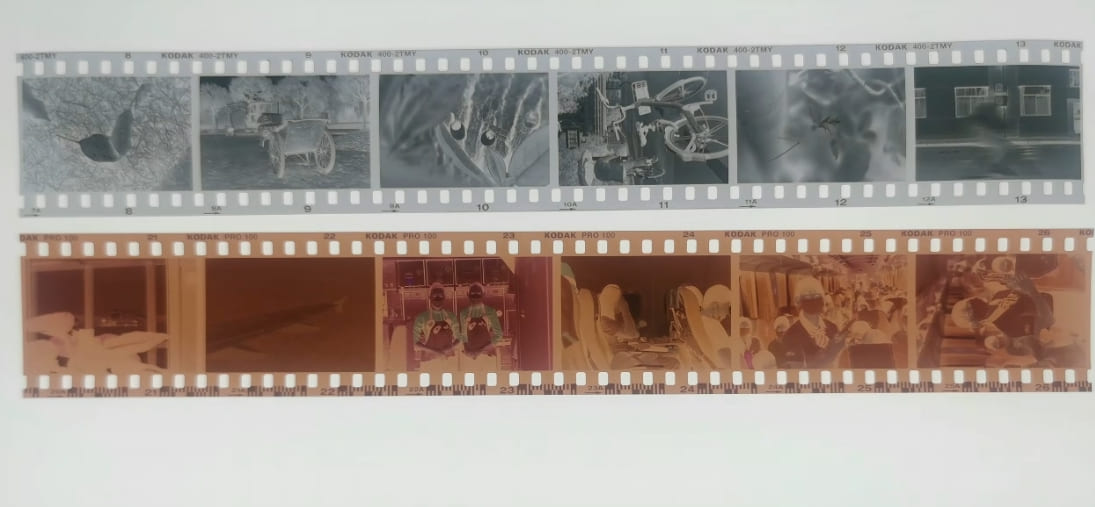
Negatives have two key traits:
- They're semi-transparent.
- Their colors are inverted (opposite to real-world colors).
Positive film, on the other hand, is the reverse of negative.
- It's also semi-transparent.
- Its colors match the real-world scene.
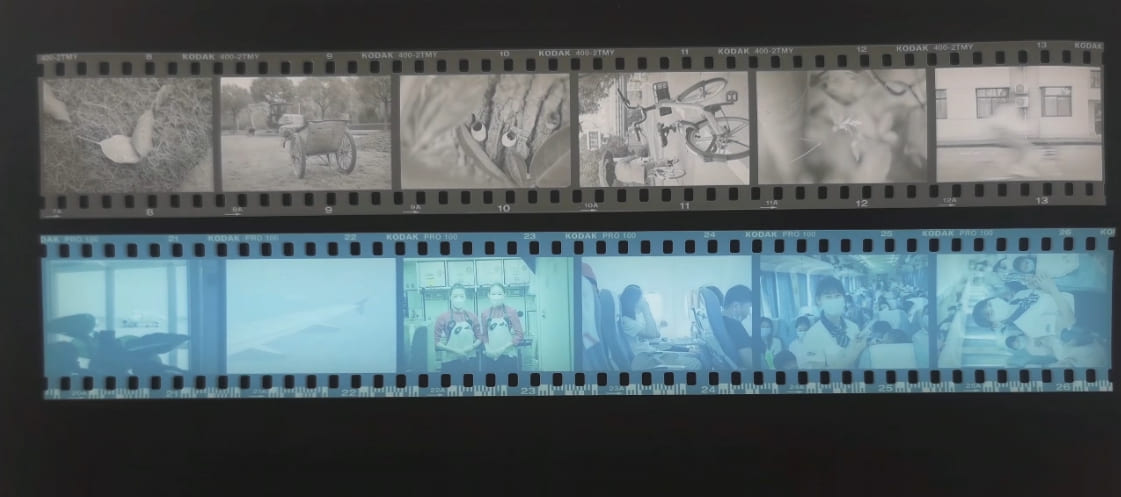
So, Multiply layer is like placing a "positive film" on top of an image. It effectively turns the upper layer into a positive film and blends it with the layer beneath.
Now, this explanation is useful enough for practical purposes, but it's not the whole story. So, what exactly is Multiply layer?
Let's see how Adobe explains it. According to Adobe, Multiply is like drawing on an image with a water-based marker.
In simpler terms, the upper layer acts like a transparent marker applied to the lower layer.
We know that using a colored marker on paper results in a semi-transparent image. Now imagine replacing the marker with an image—doesn't that sound similar to what we described earlier about "positive film"?
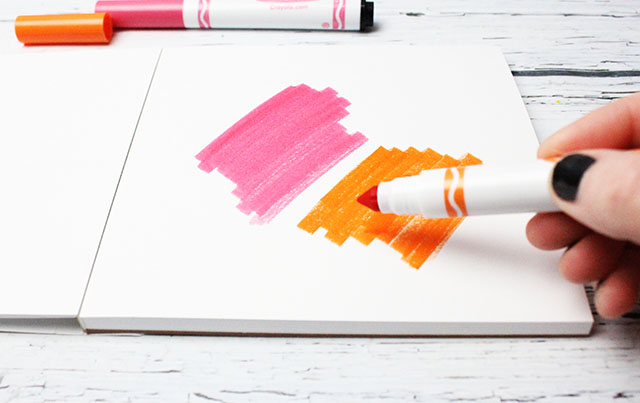
You might wonder, "Why not just lower the opacity of the upper layer?"
No, it's not the same! Let's revisit the formula:
Result Color = (Upper Layer Color × Lower Layer Color) ÷ 255
After multiplication comes division. Since pixel brightness ranges from 0 to 255 (with 255 being pure white), dividing by 255 effectively removes white.
Because when two non-white values (anything less than 255) are multiplied and then divided by 255, the result will never be 255 (pure white).
This is why simply lowering opacity won't remove white — it only makes the image more transparent.
So, here's the bottom line:
Multiply removes the upper layer's white parts, leaving the black areas to blend semi-transparently with the layer below.
Further Reading:
Mastering Photoshop Blending Modes: How to Blend in Photoshop?
How to Use Multiply Layers?
Let's look at the example below. The goal is to place the apple on the table.
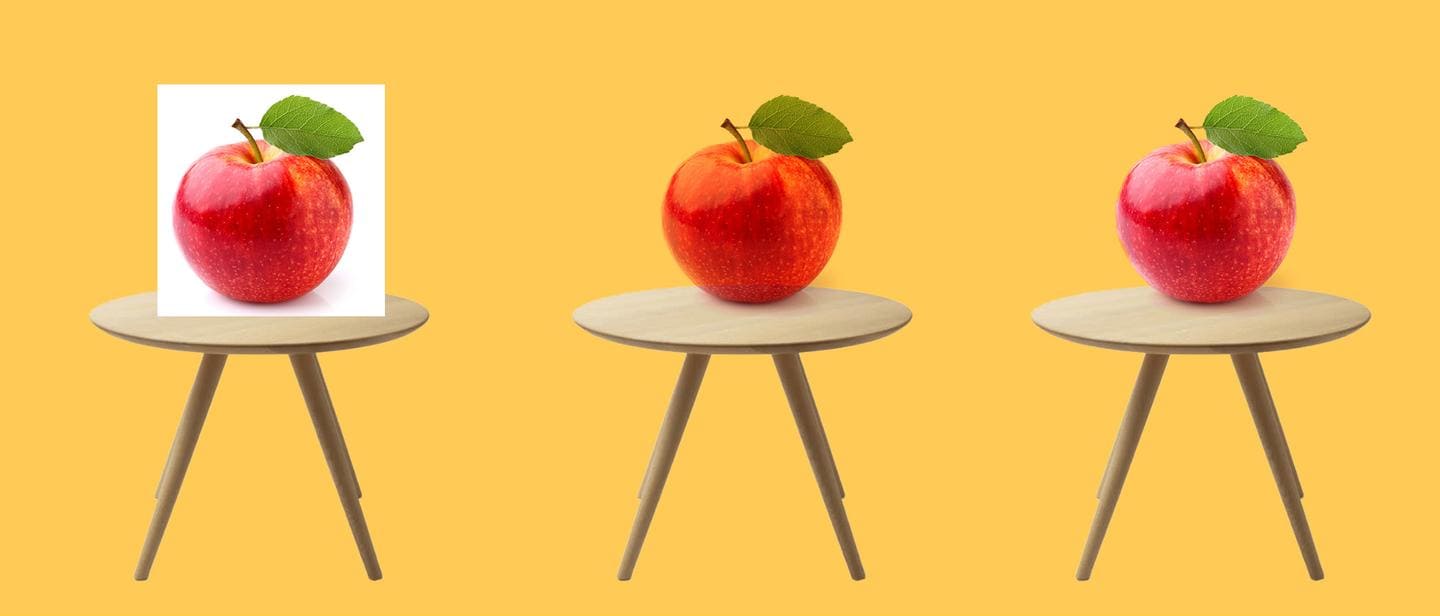
In step two, we applied the Multiply blending mode. While the white background was removed, the apple became slightly transparent.
This happened because the apple itself contains white pixels, which were also removed. That’s why, in image editing, just using the Multiply mode isn't enough — you'll need to use other color adjustment tools to refine the result.
This aligns with what we explained earlier: Multiply removes the white parts of the apple, leaving the darker areas to blend with the background in a semi-transparent way.
Multiply layers are a popular tool in photo editing, but there are a few tricks to getting the best results. Take this photo as an example — we want to give it a unique look.

We add a solid purple layer above the background layer and set the blending mode to Multiply. Let's check the result.
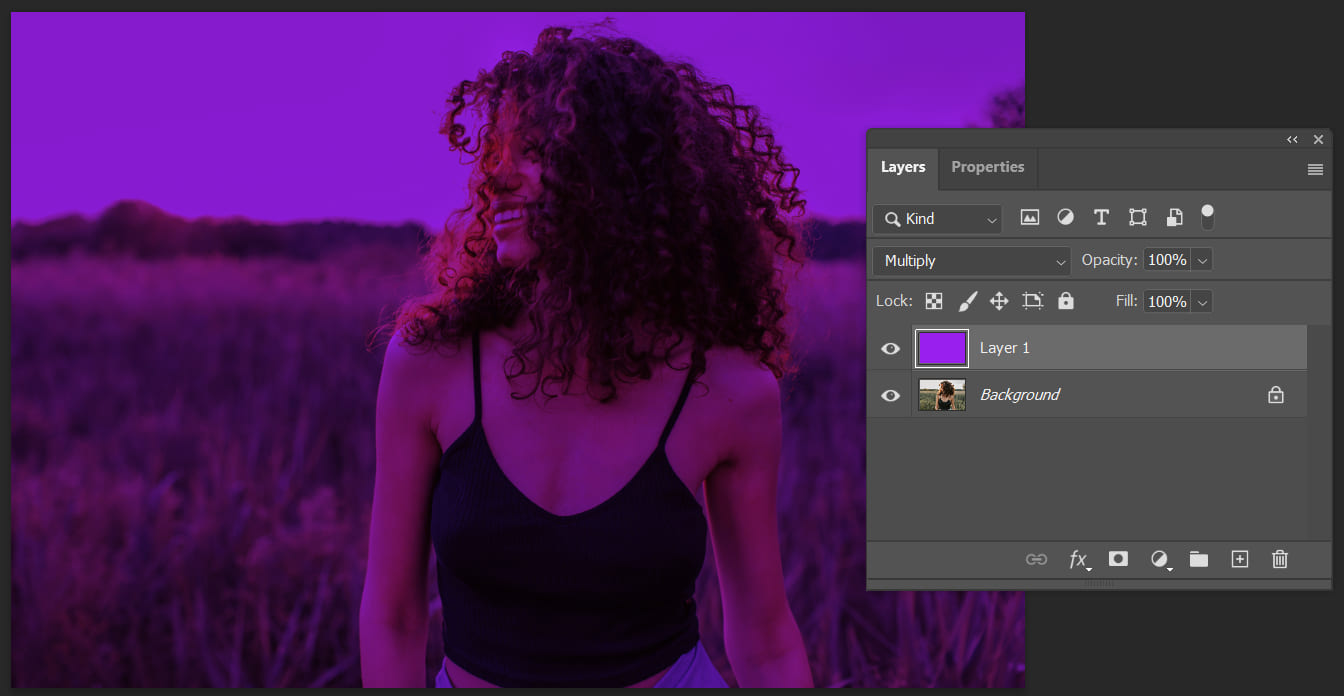
Not great, right? It looks too dark. As we mentioned earlier, you can always use other color adjustment tools to tweak it further.
But what if you want a quicker way to apply a Multiply effect without needing extra adjustments?
Here is a handy tip: use Multiply with light-colored layers.
For example, purple is a dark color, which is why it didn't work well. But if you use a light color, like pale yellow, the result will be much better.
You'll notice the white areas in the original photo disappear and are replaced by the light color you chose. This subtly shifts the highlights, creating a vintage filter effect.

Conclusion
By now, you should have a good grasp of the basic principles and techniques for using the Multiply blending mode. It's not just a simple tool for removing white backgrounds. It's a blending mode full of creative possibilities.
Whether it's color correction, overlay effects, or setting the mood, Multiply has its own unique charm. But its real magic comes from how well you understand it and how creatively you apply it.
So, don't be afraid to experiment, play around, and make Multiply layer your own. Explore and discover your unique style with it!
If you find yourself constantly adjusting layers, switching between them, or using blending effects in your work and creative projects, a high-efficiency creative controller can definitely make your work much easier.
We'd like to introduce you to TourBox, a creative console loved by many photographers, digital artists, and content creators.

Its Knob, Wheel, and buttons let you quickly switch layers, adjust opacity, and customize blending mode shortcuts. With tasks like comparing Multiply effects, TourBox keeps you focused on creating by minimizing tedious mouse and keyboard work.

Just imagine, using TourBox, akin to a game controller, to swiftly accomplish complex color adjustments and effect transitions. Isn't that pretty cool? If you seek an efficient and seamless creative experience, why not give it a try?